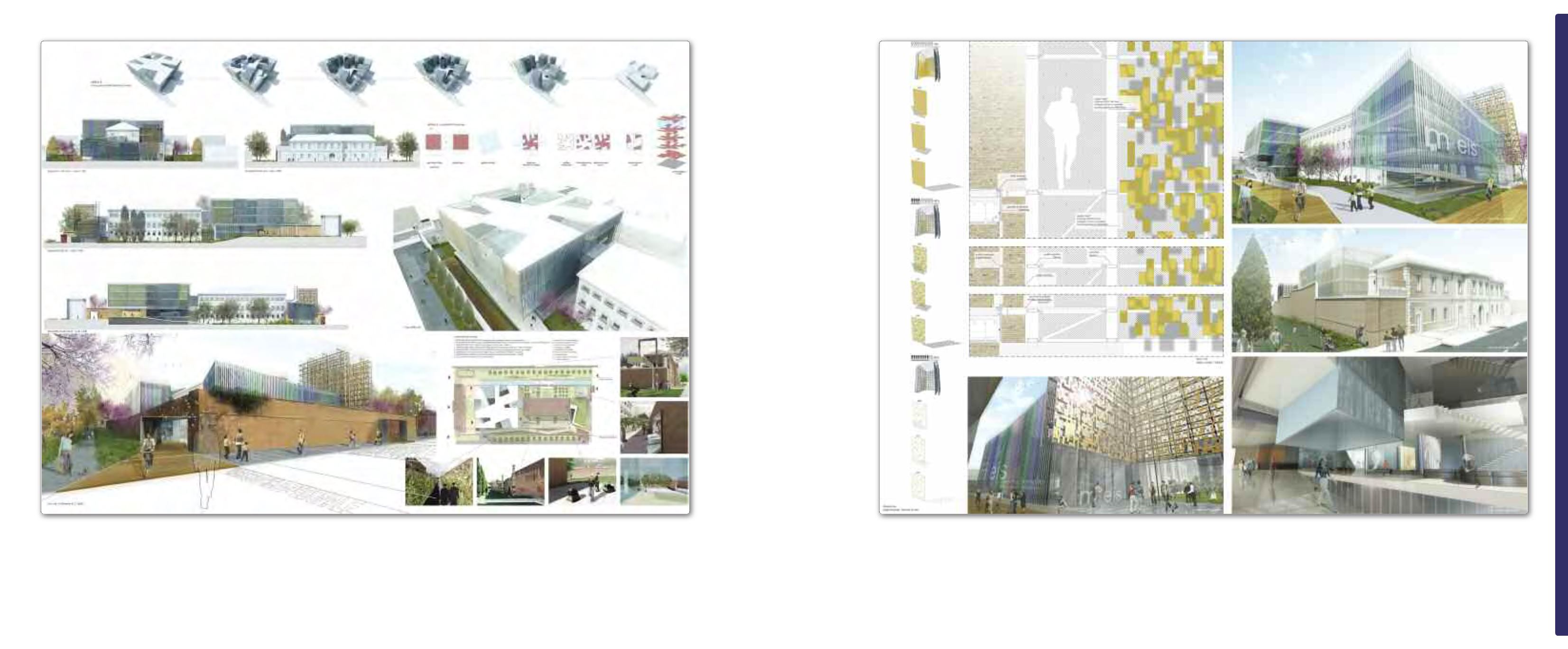
The idea of
sukah
(booth) reveals the new
MEIS.
A change in function and of meaning
returns a piece of the city to Ferrara.
Colours, lights, and volumes are the
protagonists in this new arrangement.
The visitor will be guided through the
museum visit along ramps where the
exhibitions line the path. Here, an
introduction to the history of Judaism is
a preamble to the sections of the
museum that follow.
In this way, the exhibition rooms of the
MEIS are created without destroying the
rapport between the discovery of Judaism
and the fundamental ideas underlying
the project; the ramps serve as a
continuous thread linking the exhibition
rooms in chronological order.
Like an ancient text eroded by time, the
museum is cut by a series of cones which
bore through the two floors of
permanent exhibitions. By travelling along
this conical path to view the exhibitions,
the visitor is easily able to approach the
central themes of Judaism, and to
experience them from up close.
L'idea della
sukah
(capanna) anticipa il
Museo Nazionale dell’Ebraismo Italiano e
della Shoah.
Un cambio di funzione e di significato re-
stituisce a Ferrara un nuovo pezzo di città.
Colori, luci e volumi sono i protagonisti di
questa nuova configurazione.
Il visitatore verrà condotto in un percorso
museale, fatto di rampe espositive, nel
quale una prima introduzione sulla storia
dell’ebraismo farà da preambolo alle suc-
cessive sezioni dell’allestimento. Questo
farà sì che le sale espositive del MEIS non
abbandonino mai il rapporto che lega la
conoscenza in termini di ebraismo con
l’idea cardine di progetto; un filo conti-
nuo che unisce ogni spazio espositivo ad
una successione temporale.
Come un testo antico eroso dal tempo,
così il museo viene scavato da una serie
di coni, che attraversano per intero i due
piani della permanente. Il meccanismo
dei coni espositivi permette al visitatore di
avvicinarsi dall’esterno ad alcuni temi cen-
trali dell’ebraismo, per poi riviverli al loro
interno con una visione più intima.


